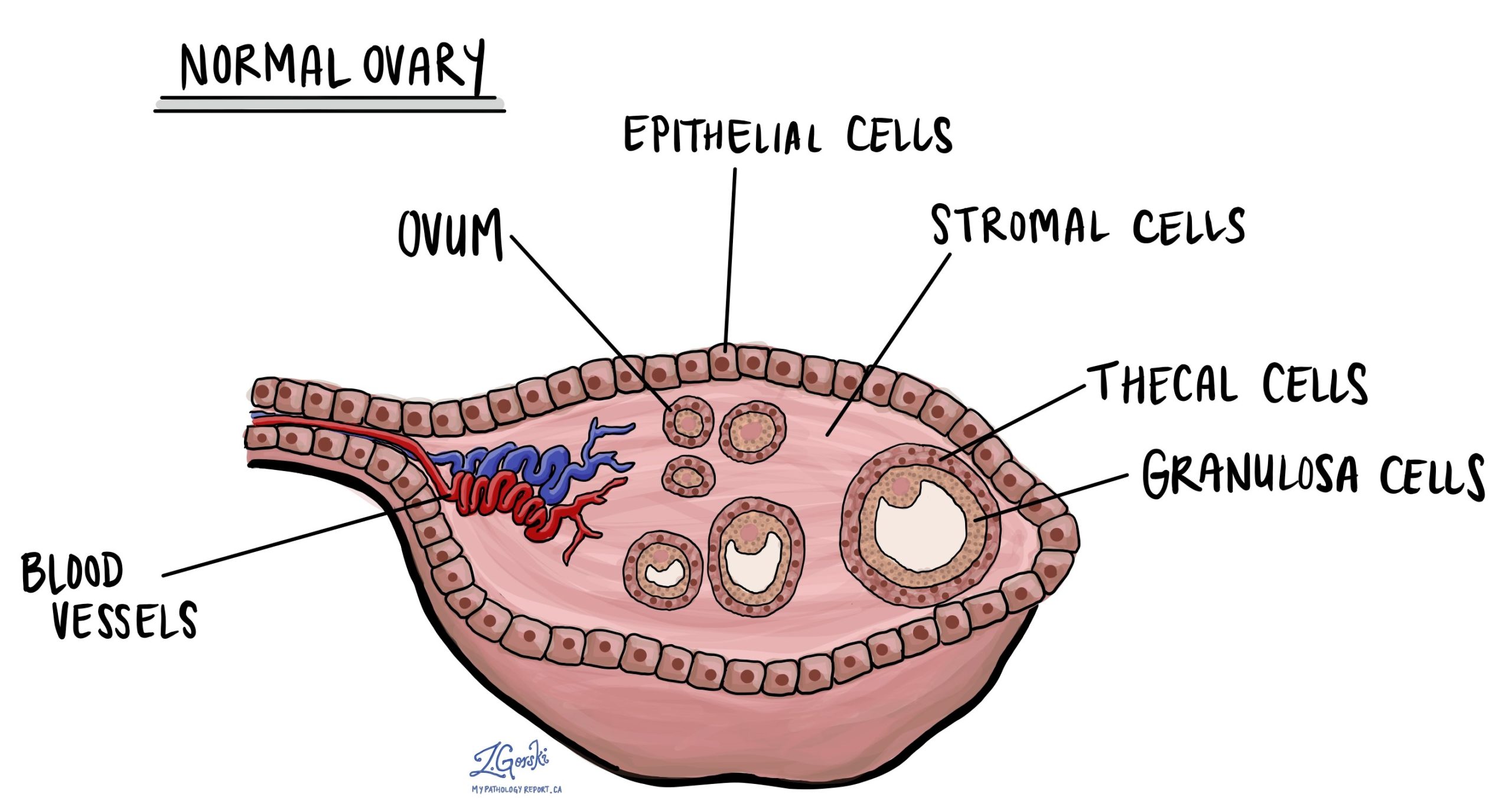by Emily Goebel, MD FRCPC
August 27, 2025
Atrophy of the ovary means that the ovary becomes smaller than normal and loses its usual function and structure. This process involves a decrease in the number of healthy ovarian cells and a reduction in hormone production. Atrophy of the ovary is a normal part of aging and is most commonly seen around the time of menopause or after menopause.
Although it is most often a natural change, ovarian atrophy can also occur earlier in life due to medical conditions or treatments that affect the ovaries.
What causes atrophy of the ovary?
There are several possible causes of ovarian atrophy:
- Menopause – As women age, the ovaries naturally stop releasing eggs and gradually reduce their production of the hormones estrogen and progesterone. This leads to atrophy and is considered a normal part of menopause.
- Surgery or medical treatment – Surgical removal of the ovaries, called oophorectomy, results in immediate atrophy. Treatments such as chemotherapy or radiation therapy can also damage the ovarian tissue and cause the ovaries to shrink.
- Hormonal factors – Long-term use of certain hormonal medications, including some forms of birth control or hormone therapies, can affect ovarian activity and contribute to atrophy over time.
- Autoimmune conditions – In some autoimmune diseases, the body’s immune system mistakenly attacks the ovaries, leading to inflammation, damage, and eventual atrophy.
- Genetic conditions – Disorders such as Turner syndrome or premature ovarian insufficiency (POI) can cause ovarian atrophy at a much younger age than typical menopause.
What are the symptoms of ovarian atrophy?
The symptoms of ovarian atrophy are related to the loss of ovarian function and the drop in hormone levels, especially estrogen. Common symptoms include:
-
Irregular or absent menstrual periods. As the ovaries stop producing eggs, menstrual cycles may become unpredictable or stop altogether.
-
Hot flashes and night sweats. These symptoms occur because of reduced estrogen, similar to those experienced during menopause.
-
Vaginal dryness and discomfort. Lower hormone levels can cause thinning of the vaginal lining, which may lead to dryness and irritation.
-
Decreased libido. Changes in hormone levels may reduce sexual desire.
-
Infertility. If the ovaries no longer release eggs, it becomes difficult or impossible to conceive naturally.
What does atrophy of the ovary look like under the microscope?
When a pathologist examines an atrophic ovary under the microscope, there are no developing eggs (ova) visible. The supporting tissue of the ovary, called the stroma, is also reduced compared to that of a reproductive-age woman. As a result, the ovary appears smaller and no longer shows evidence of ovulation.

Questions to ask your doctor
-
Is my ovarian atrophy part of the natural aging process or caused by another condition?
-
Could my medical treatments, such as chemotherapy or radiation, have contributed to ovarian atrophy?
-
Do I need any tests to check my hormone levels or ovarian function?
-
What treatment options are available to help with symptoms such as hot flashes or vaginal dryness?
-
How does ovarian atrophy affect my fertility?
-
If I have ovarian atrophy at a younger age, could it be related to a genetic or autoimmune condition?



